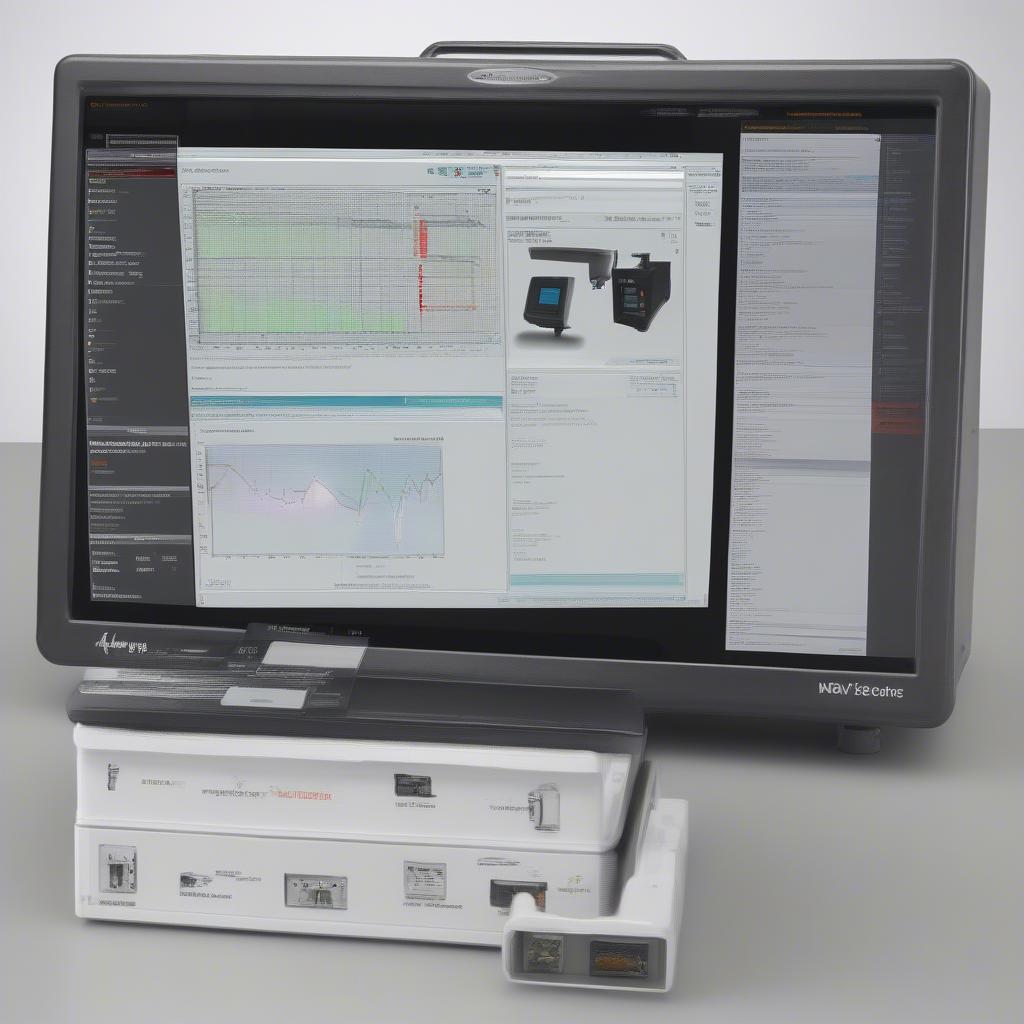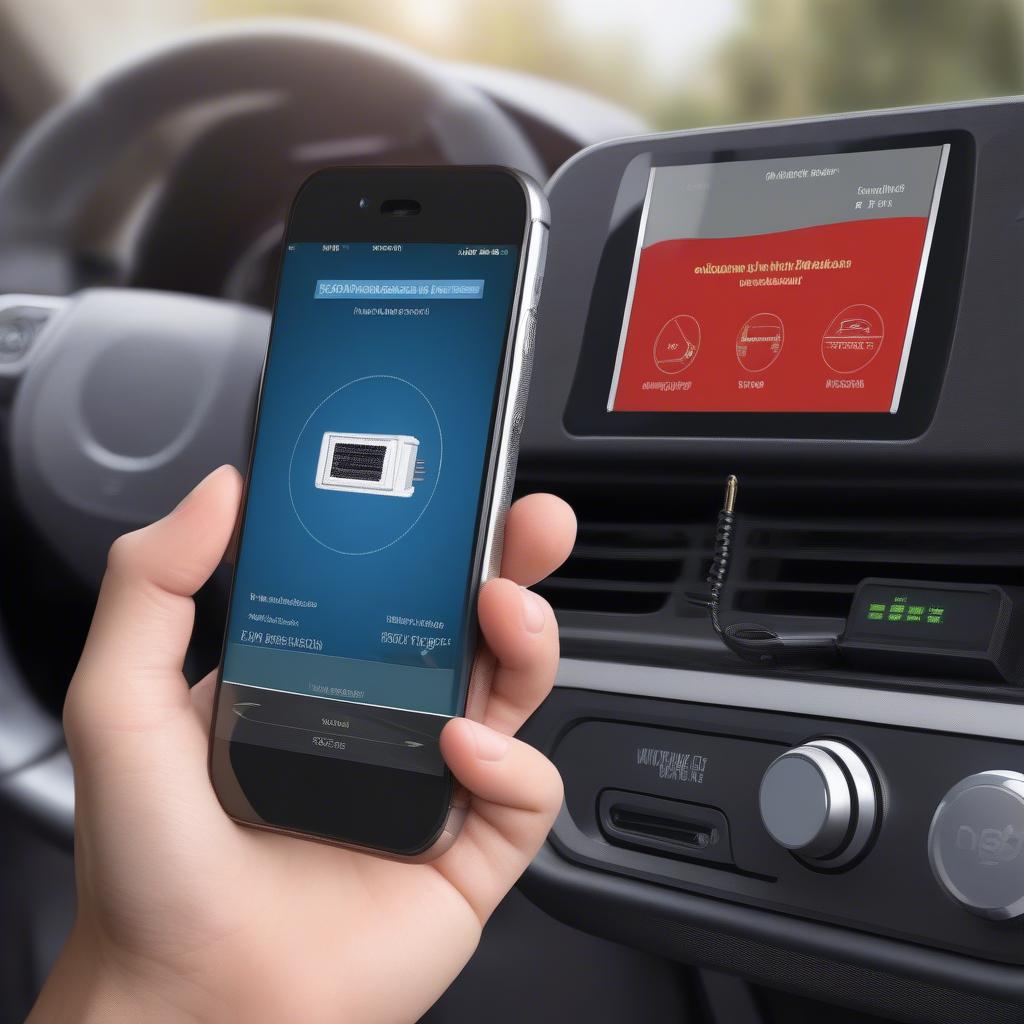Choosing the right OBD2 scanner can be daunting, especially with the wide array of options available. This guide will equip you with the knowledge and expertise to select the best OBD2 scanner for your needs, whether you’re a professional mechanic or a DIY enthusiast.
OBD2 scanners have become indispensable tools for car owners and professionals alike. They allow you to access your vehicle’s diagnostic data, read and clear trouble codes, and monitor various engine parameters. This can help you identify potential issues, perform maintenance, and potentially save money on expensive repairs.
Understanding OBD2 Scanners: A Comprehensive Overview
OBD2 stands for On-Board Diagnostics 2. It’s a standardized system for vehicle diagnostics introduced in the United States in 1996 and adopted globally. OBD2 scanners connect to your vehicle’s diagnostic port, typically located under the dashboard. They then communicate with the vehicle’s onboard computer to access and interpret diagnostic information.
Types of OBD2 Scanners: A Deep Dive into Features and Capabilities
OBD2 scanners come in various shapes and sizes, each with different features and capabilities. Understanding these differences is crucial in selecting the right scanner for your specific needs. Here’s a breakdown of the most common types:
1. Basic Code Readers: The Foundation of Diagnostics
These are the most affordable and simplest scanners. They primarily read and clear trouble codes, providing basic information about potential problems. They are a great starting point for individuals who want to diagnose simple issues like engine light warnings.
Example:

2. Enhanced Code Readers: Stepping Up the Diagnostic Game
Enhanced code readers expand upon basic functionality by offering additional features like data streaming, live sensor data readings, and freeze frame data analysis. This allows for a deeper understanding of vehicle performance and troubleshooting more complex issues.
Example:

3. Advanced Diagnostic Scanners: Professional-Grade Diagnostics
These are the top-of-the-line scanners, often used by professional mechanics. They offer a comprehensive set of features, including advanced code reading, data logging, bi-directional controls, and support for various vehicle manufacturers.
Example:

4. Wireless OBD2 Scanners: Convenience and Mobility
Wireless OBD2 scanners connect to your smartphone or tablet via Bluetooth or Wi-Fi, offering a convenient way to access diagnostic data on the go. These scanners are often integrated with mobile apps that provide user-friendly interfaces and additional features like data analysis and reporting.
Example:

Key Features to Consider When Selecting an OBD2 Scanner
Now that you have a grasp on the different types of OBD2 scanners, let’s explore the key features you should consider:
1. Compatibility: Ensuring Seamless Integration with Your Vehicle
“Will it work with my car?” This is a crucial question. Ensure the scanner you choose is compatible with your vehicle’s make, model, and year. OBD2 compatibility became standard in the United States for vehicles manufactured after 1996. However, some older vehicles may require additional adapters or specialized scanners.
2. Data Capabilities: Unveiling the Secrets of Your Vehicle
Consider the type of data you need to access. Do you need basic code reading, or do you want detailed live data streaming and advanced diagnostics? The scanner’s data capabilities should align with your diagnostic goals.
3. Ease of Use: User-Friendly Interface for Smooth Diagnostics
The scanner’s interface should be easy to navigate and understand, regardless of your technical expertise. Look for scanners with clear menus, intuitive buttons, and comprehensive instructions.
“I don’t want to spend hours deciphering codes. Is it user-friendly?”
4. Additional Features: Unlocking Value and Convenience
Consider additional features that enhance your diagnostic experience, such as:
- Data Logging: Capture and store diagnostic data over time for analysis and troubleshooting.
- Freeze Frame Data: Capture the vehicle’s parameters at the moment a fault occurs, providing valuable insights.
- Bi-directional Controls: Control certain vehicle functions, such as activating actuators or resetting systems.
- Live Data Display: View real-time sensor readings for accurate performance monitoring.
- Multilingual Support: A valuable feature for users who prefer different languages.
5. Brand Reputation: Choosing Reliability and Support
Research different brands and their reputation for quality, reliability, and customer support. Look for manufacturers with a history of producing durable and accurate scanners.
“I need a scanner that I can trust. Is this brand known for reliability?”
6. Price: Finding the Right Balance of Features and Cost
OBD2 scanners range in price from affordable basic models to high-end professional scanners. Determine your budget and choose a scanner that offers the features you need at a price that suits your wallet.
Top OBD2 Scanners Recommended for Different Needs
Here are some top-rated OBD2 scanners recommended for various users:
For Basic Diagnostics:
- [Name of Scanner] – [Brief Description of Features] – [Price Range]
For Enhanced Diagnostics:
- [Name of Scanner] – [Brief Description of Features] – [Price Range]
For Professional Mechanics:
- [Name of Scanner] – [Brief Description of Features] – [Price Range]
For Wireless Convenience:
- [Name of Scanner] – [Brief Description of Features] – [Price Range]
OBD2 Scanner Buying Guide: Navigating the Market with Confidence
Here’s a comprehensive buying guide to help you find the perfect OBD2 scanner for your needs:
- Identify Your Needs: What diagnostic functions do you require? Basic code reading, live data, or advanced troubleshooting?
- Determine Your Budget: Set a realistic budget and consider the value you’re getting for your investment.
- Research Compatibility: Ensure the scanner is compatible with your vehicle’s make, model, and year.
- Read Reviews and Comparisons: Seek insights from other users and professionals to make an informed decision.
- Consider Additional Features: Look for features that enhance your diagnostic experience and meet your specific requirements.
- Choose a Reputable Brand: Select a manufacturer known for quality, reliability, and customer support.
Remember: Choosing the right OBD2 scanner is an investment in your vehicle’s well-being and your ability to diagnose and troubleshoot potential issues. By following this guide and carefully considering your needs, you can confidently select the best OBD2 scanner for your automotive journey.
Frequently Asked Questions
1. What is the difference between an OBD2 code reader and a scanner?
- Code readers primarily read and clear trouble codes, while scanners offer additional features like live data streaming, freeze frame data, and bi-directional controls.
2. Can I use any OBD2 scanner on my car?
- Not all scanners are compatible with all vehicles. Ensure the scanner you choose is compatible with your vehicle’s make, model, and year.
3. How do I connect an OBD2 scanner to my car?
- OBD2 scanners connect to your vehicle’s diagnostic port, typically located under the dashboard.
4. Can an OBD2 scanner tell me what’s wrong with my car?
- OBD2 scanners provide diagnostic information, but it’s important to understand the data and consult with a qualified mechanic if needed.
5. Are OBD2 scanners safe to use?
- When used correctly, OBD2 scanners are safe for your vehicle and do not damage your car’s computer system.
6. What can I do with an OBD2 scanner?
- You can use an OBD2 scanner to read and clear trouble codes, monitor engine parameters, diagnose potential issues, and potentially save money on repairs.
7. Can I use an OBD2 scanner to clear the check engine light?
- Yes, you can use an OBD2 scanner to clear the check engine light. However, it’s crucial to address the underlying issue causing the light to illuminate.
Conclusion
Choosing the best OBD2 scanner can significantly improve your automotive experience. By understanding the different types, key features, and buying tips outlined in this guide, you can confidently select the perfect scanner that meets your needs and budget. With the right tool in hand, you’ll be better equipped to diagnose potential issues, perform routine maintenance, and potentially save money on costly repairs.
Remember: Investing in an OBD2 scanner is a wise decision for any car owner. It empowers you to take control of your vehicle’s health and confidently navigate the road ahead.
Ready to take the next step? Contact us today for personalized recommendations and expert advice.
WhatsApp: +1(641)206-8880
Email: [email protected]
We have a 24/7 customer support team ready to assist you.